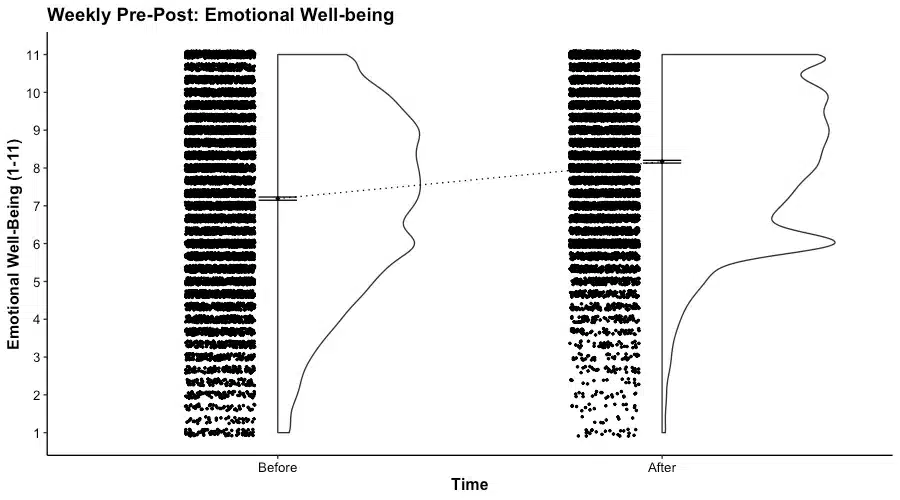Well, it’s that time of year again. Our social media feeds are filled with tips for healthier living. Our inboxes are brimming with new routines and habits. Everything we read is offering new suggestions for remaking our lives in the pursuit of happiness. It’s also the time of year when I spend some time each day browsing these suggestions, wearing my sweatpants, large iced coffee in hand, and thinking nah.
Make your bed each morning! No, thanks.
Start each day with a mug of hot water and lemon! Nope.
Spend Sundays prepping healthy meals for your family for the week.1 I mean, c’mon.
Now, maybe you’re in the same boat as me. Maybe the idea of writing “white chicken chili” on a notepad and listing out its ingredients every Sunday fills you with existential dread.
But I would venture to guess that, for some of you, this idea is energizing. You feel great when you plan out your meals! You guzzle hot water and lemon! Making your bed each morning (which roughly 70% of you do) is the best part of your day!
Much of the Internet’s self-improvement advice is packaged as one-size-fits-all, but it turns out, different strategies work for different people.
So, what should you do to be happier this year? This new study can help you find out.
I like the sound of this
The project we’re discussing is called Big JOY. It was designed by the Greater Good Science Center at UC Berkeley,2 and it’s a little different from a typical study. Big JOY is a one-week online program that teaches a “micro-act” each day, designed to increase happiness. These micro-acts are based on prior research in positive psychology, and can be done in just a few minutes per day.
Here’s the basic idea:
- Big JOY asks participants to fill out surveys reporting on their well-being before and after each micro-act, as well as at the beginning and end of the week.
- Anyone can sign up to participate in the program and answer the surveys. I, of course, did this.
- So far, roughly 87,000 people from 22 countries have participated.
- Data collection is ongoing, and the goal is to identify which micro-acts work best for which people.
- Participants also get a personalized report telling them which micro-acts led to the biggest change in their happiness—this is how you can figure out which strategies work for you.
What are these “micro-acts”?
Have you ever been driving a boat, and you’re heading in one direction, and then you shift the wheel ever so slightly, and a few hours later you’re hundreds of miles off course? Me neither.3
But this is a good analogy for the way that “mico-acts” can work to make us happier. We don’t necessarily need to redesign our lives. We don’t need to wake up at 5:30am everyday to meditate for three hours. Small changes—even 5-minute strategies—can make a big difference in changing the course of our lives.
So, let’s take a look at Big JOY’s menu of micro-act options:
- Shift your perspective: Think of a situation that has made you frustrated or upset, and try to think about its “silver linings.”
- Dwell in awe: Watch something that inspires awe. In Big JOY, this is a video of a natural wonder of the world, but this could also work with a real-life nature experience, your child, a sunset4—whatever inspires you.
- Celebrate another’s joy: Ask a person in your life about something that made them feel good. Listen, ask questions, and celebrate with them.
- Tune in to what matters: Think through values that are important to you (e.g., generosity, honesty, integrity), and reflect on how you practice these day-to-day.
- Make a gratitude list: Make a short list of things you’re thankful for.
- You are a force of good: In Big JOY, this involves listening to a recording from the Buddhist tradition about how you inherently contribute goodness to the world. A brief prayer or meditation would likely work, too.
- Do something kind: Think about people you will see today and something you could do to brighten their day—a favor, a compliment, or just some words of encouragement.
- Share a laugh: In Big JOY, this involves listening to a short audio clip of others laughing. You could also share a laugh with someone in your life, or watch something funny.
So, do they work?
When researchers analyzed the data they’ve collected so far (11,000 completed surveys), they found, on average, that people who participated in Big JOY reported improvements in well-being over the course of 7 days, including:
- 26% increase in overall well-being
- 23% increase in positive emotions
- 30% increase in relationship satisfaction
- 12% increase in sleep quality

Keep Reading
Want more? Here are some other blog posts you might be interested in.








